An iceberg was part of a glacier that broke off, or calved, fell into the water, and then floated away from its icy home. Steered by ocean currents, most of the icebergs that float away from Greenland, end up in Iceberg Alley. They float through the Labrador Sea and head south towards the Atlantic Ocean. Ferryland, Newfoundland, Canada is a small fishing village, and has a great view of Iceberg Alley. Needless to say it is popular with iceberg-gawking tourists!
All Things Icebergs will cover the reputation of icebergs, the categorization by shape, and finally, why icebergs come in so many different colors. For WBLT, Geoscience students, this will cover Second Semester, Class 11.
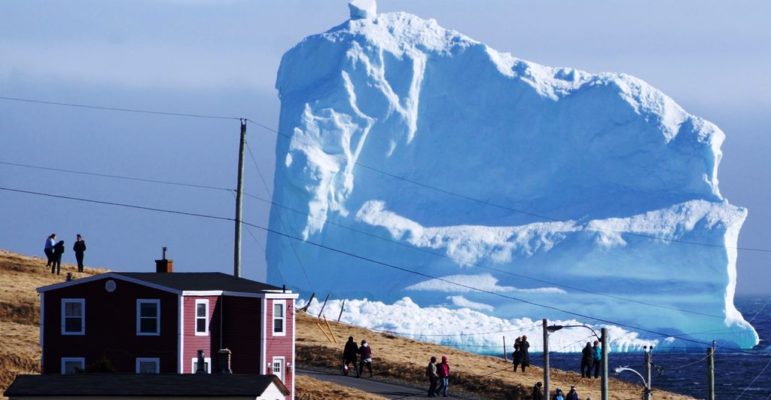
The Unsinkable RMS Titanic
The topic of icebergs make most people think about the sinking of the Titanic. The RMS Titanic was the largest luxury passenger liner of the era in the early 1900s. It sailed from Southampton, England, to New York City, USA, on April 10, 1912. Some of the nicknames for this ship was, “The Millionaire’s Special”, The Wonder Ship”, and the most popular, The Unsinkable Ship. Unfortunately, the unsinkable ship collided with an iceberg and sank, five days later, on April 15, 1912.
The International Ice Patrol
Future generations study disasters and implement new safety standards based on past errors. The loss of the Titanic taught the importance of having lifesaving equipment, like having enough lifeboats for all passengers, and the importance of safety drills. The United States Coast Guard formed The International Ice Patrol, after the sinking of the Titanic. The patrol keeps track of icebergs and their locations so that they can warn ships traversing the area.
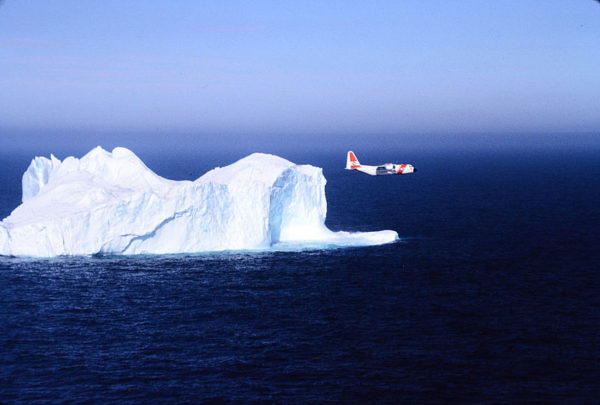
Is all floating ice called icebergs?
Thanks for that question, Mary, from South Carolina! Scientists categorize icebergs by size – kind of like pizza. Except for the small floating chunks, icebergs come in small, medium, large, and extra large sizes. Bergy Bits are smaller than a size-small iceberg. They sit 3 – 16 feet above the ice. Growlers are smaller than a Bergy Bit, and are about the size of a small vehicle. Growlers make a growling sound when they melt and split apart.
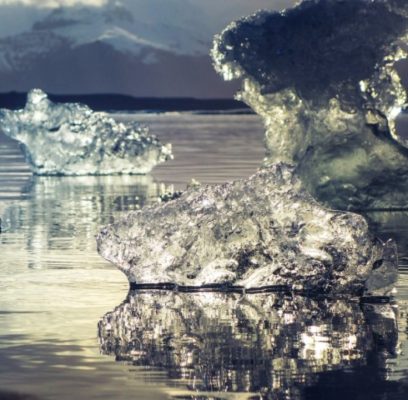
It is all in the shape!
There are two types of icebergs, tabular and non-tabular. Tabular icebergs break off of the Antarctica Ice Shelf and are flat, like a table.

Large continental glaciers, or ice sheets, form on land and flow to the ocean. But when the ocean is SO cold that the ice from the glaciers can’t calve, they end up forming an ice shelf that floats on the sea. The glaciers keep feeding the ice shelf and it grows larger and larger and floats just off of the coast. Most ice shelves are located off the coast of Antarctica.
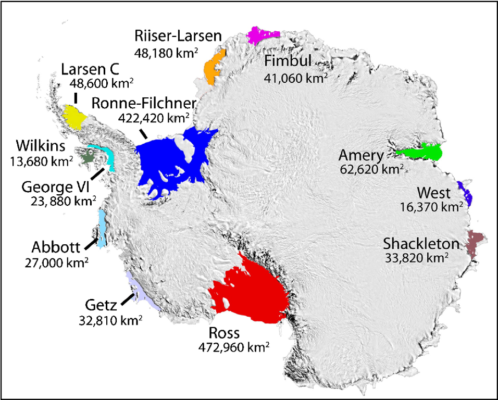
Just like the sea ice experiment that we performed from the previous post, “All Things Ice“, icebergs from a floating ice shelf does not affect the water levels. In our lab, when the ice melted in the glass, it merely filled in the area where it had once displaced the water. The volume of the water in the glass didn’t change. The ice shelf is already floating on the ocean and will not impact the water levels.
The World’s Largest Iceberg
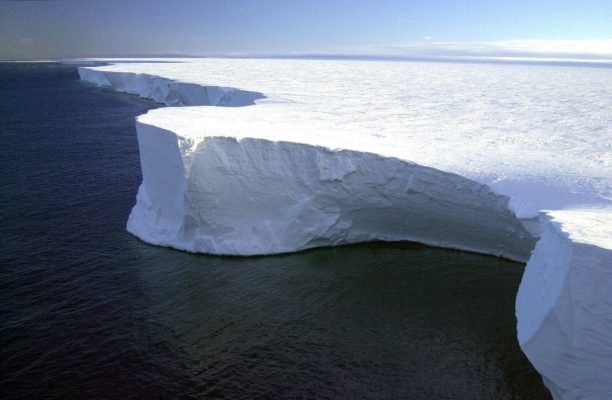
B 15, the world’s largest iceberg, (photo above) broke off of an Antarctic ice shelf during a storm, in the year 2000. It measured 183 miles long and 23 miles wide. That is one GIGANTIC ‘berg!
As B 15 traveled around Antarctica and headed north into warmer waters, the melting process increased. When an iceberg melts and becomes less than 16 feet in length they are called growlers. As of, 2020, B 15 is now just a drop of water in the world’s oceans.
Categorizing Icebergs
The second way to classify an iceberg is by shape. Review the table and then print the Iceberg Categorization Student Lab Sheet.

Iceberg Categorization Science Lab
No two icebergs are the same, so scientists use set shapes for their observations. Dry dock icebergs have a channel or type of melt erosion in the center. On each side of the channel, the dry dock shape can have more than one characteristics of other iceberg types, like pinnacles, blocks, or domes.
Need help? Lab answers below.
Rainbow ‘bergs
The photo below features a ‘dome’ shaped, green iceberg that has flipped over showing its underbelly. The emerald green color comes from algae that grew beneath the iceberg. Recently, some scientists have suggested that the green color might come from minerals.
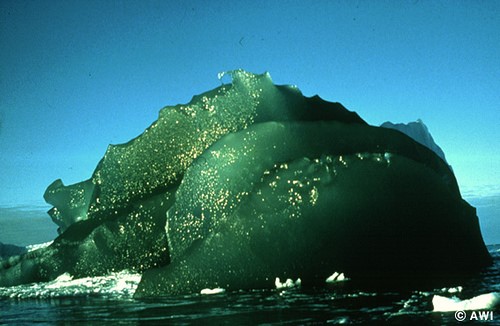
White Icebergs
This wedge shaped iceberg is young and still appears white because it has not been around long enough to be compressed into crystallized ice. It has air bubbles and a covering of snow and frost. When the sunlight shines on snow particles, they scatter the wavelengths of light before they can be absorbed. The light reflected as we see it, is white.
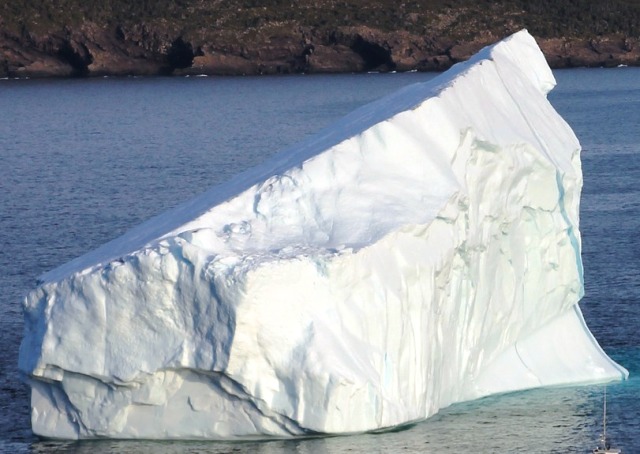
Blue Icebergs
Compressed glacier ice squeezes out air bubbles leaving crystallized ice. When the sunlight strikes the surface of compressed ice, it absorbs the red wavelengths of light and the refracted light looks blue. Most glacier ice is a mixture of white and blue, and sometimes a few dirt streaks also. If you examine white and blue icebergs closely, you can see the differences in the ice.
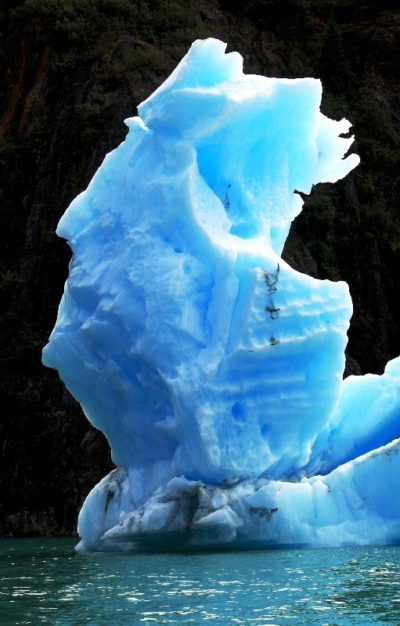
Infused Stripes
When seawater seeps into the cracks of an iceberg, it freezes and the stripes look darker.

Black Stripes
Icebergs can also have stripes formed from dirt and debris that are plucked from valley walls by the flowing glacier. This topic was covered in the post, “Anatomy of a Glacier“. The stripped growlers in the photo below, still carry sediments which will eventually become nutrients and food for ocean life.
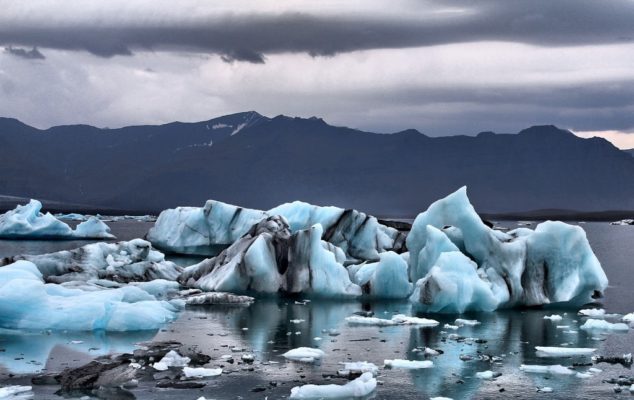
The Role of the Iceberg
Most humans think of icebergs as a danger that sinks ships. But in reality, when icebergs melt they provide land nutrients to ocean life. As we saw in the Sea Ice lab from “All About Ice“, icebergs also create convection currents that sets all of the earth’s oceans in motion!
The circular motion of the convection currents stir up food from the bottom of the ocean for all of the marine life that lives well above the ocean floor. Glaciers and icebergs play an important role in earth science!
Categorization Lab
How did you do on the categorization lab? You can check your answers here, but try to do it on your own first!
The Icebergs of Iceberg Alley
Test your knowledge of iceberg shapes!
Share your thoughts and lab results with us! Just remember: This is a safe site for children. If comments are not tastefully stated, they will disappear in a “POOF”!


